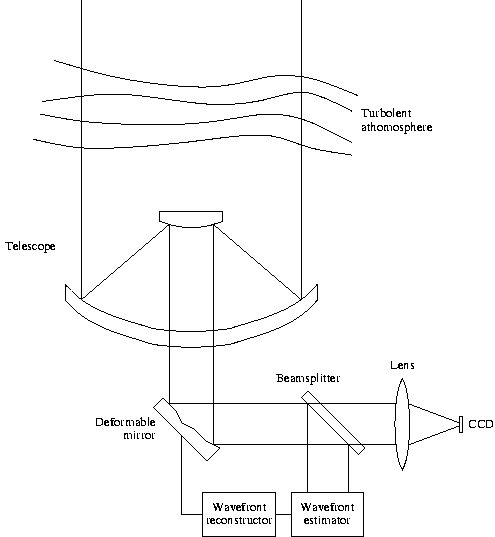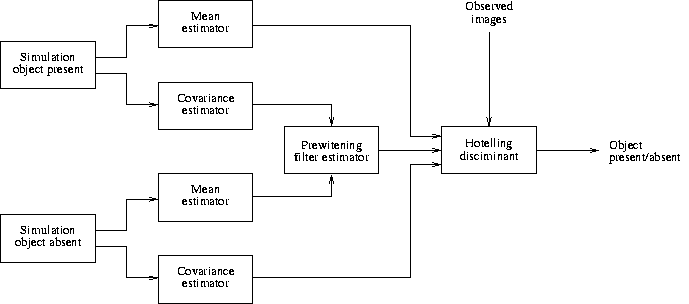The detection of point objects has recently become an interesting topic in
astronomy. Current applications include the detection of extrasolar
planets as well as near-earth asteroids. Adaptive-optics systems have
emerged as powerful instruments for astronomical observation; the basic
structure of an adaptive-optics system is shown below:

Astronomical images obtained from adaptive optics systems can be thought of
as realizations of spatiotemporal random processes; in these cases, the
sources of randomness that influence astronomical imagery are the CCD
noise in the science camera, the variability over time of the partially
corrected point-spread function (PSF) and the unknown position and
characteristics of the object(s) of interest. Current practice in
astronomical point detection does not fully take advantage of the
statistical properties of the temporal sequence of images obtained from
adaptive-optics systems. For this reason, conventional state-of-the-art
algorithms for point-object detection are suboptimal.
In a recent theoretical study carried out by Barrett et. al., the theory
of object assessment of image quality has been extended and applied to
adaptive-optics systems. Although this theory turns out to be too
complicated to allow a complete analytical understanding, there are some
alternatives.
In this research project, we used simulation to carry out a
performance analysis of the spatiotemporal Hotelling discriminant for
planet detection (see figure below). We demonstrated how the Hotelling
discriminant can be applied in practical cases and which improvements over
current techniques for planet detection can be achieved. This research
posed several challenges; some of them are the generation of good
estimations of first- and second-order statistics for the PSF contribution
to the spatiotemporal covariance matrix, the ability to take advance of
the particular structure of this matrix in order to store and manipulate
it and, in particular, compute its inverse. Because of the optimality with
respect to the area under the receiver-operator characteristic of the
Hotelling discriminant among all the linear discriminants,
this new technique outperformed previous algorithms for planet detection
using the test images that we examined.

This work is a collaborative effort with Prof. Harrison H. Barrett in the
Dept. of Radiology, University of Arizona
College of Medicine.
Publications:
-
Luca Caucci, Harrison H. Barrett, Nicholas Devaney, and Jeffrey J. Rodriguez, "
Application of the Hotelling and ideal observers to detection and localization of exoplanets,"
Journal of Optical Society of America A, Vol.24, no. 12, Dec. 2007, pp. B13-B24. [ PDF ]
-
Luca Caucci, Harrison H. Barrett, and Jeffrey J. Rodriguez, "Spatio-temporal
Hotelling observer for signal detection from image sequences," Optics Express, Vol. 17,
no. 13, June 2009, pp. 10946-10958. [ PDF ]
